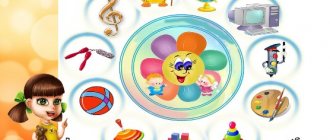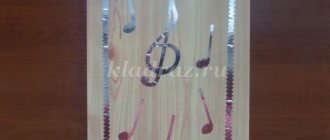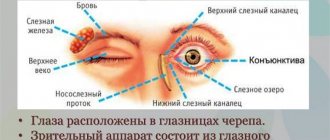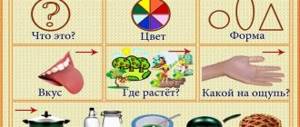Consultations for kindergarten teachers. TIKO technology
Consultations for teachers “TIKO technology - modeling for the development of preschool children”
The best way to make a child good is to make him happy O. Wilde.
Children play with everything they can get their hands on, so they need safe and durable things to play with, and TIKO construction sets give them the opportunity to experiment and express themselves.
"TIKO" is a Transformable Game Constructor for Education. It is a set of bright flat plastic figures that are hinged together. As a result, the process of transition from plane to space, from development to three-dimensional figure and back, becomes clear to the child. Inside the large figures of the designer there are holes, which, when collecting game forms, act as a “window”, “door”, “peephole”. You can design an infinite number of game figures: from a path and a fence to furniture, a cottage, a rocket, a ship, an octopus, a snowman, etc. The creative nature of the game is determined by the presence of a game concept, its free development, the variability of solving a creative problem, and children’s interest in the activity process , the presence of an imaginary situation. Mastering the design features of the material prompts children to create new objects, changing their properties: put a brick on a wide edge - you can build a path, a bench, put the same brick on a narrow short edge - you can build a high fence, etc. But if you play carelessly, these buildings break down and need to be restored again, they are difficult to move to another place, and this is some inconvenience for children’s play activities. And in such a situation, the TIKO construction set will come to the aid of children. The Transformable Game Constructor for Education (TIKO) consists of 10 sets designed for preschool children. What can be solved using the TIKO designer? The opportunity to explore the world around us independently, but within the framework of an organized developmental environment and with the necessary guidance, are optimal conditions for the development of a preschooler. Working with the TIKO designer, we can solve several problems at once: 1) creating a developmental environment; 2) organization of developmental classes; 3) implementation of project activities in kindergarten. The use of TIKO educational constructors is an effective method of working with preschool children. Captivated by the process of modeling and design, children do not notice how educational tasks are implemented by the teacher in the game. A developing environment in preschool institutions is necessary for the harmonious development and successful preparation of children for the first grade of primary school. Today, a developmental environment for preschoolers can be easily organized with the help of an educational constructor for three-dimensional modeling of TIKO. Moreover, the designer can be used in various directions: 1) in the theater corner you can construct scenery and characters for fairy tales from TIKO parts; 2) in the physical education corner - for sports games and competitions you can use various attributes built from TIKO parts; 3) a doll corner with furniture, rugs and other household utensils can be completely constructed from TIKO; 4) in the corners with role-playing games 5) in the corner of modeling and art activities, you can also design colorful patterns and ornaments from TIKO; 6) equip the reading corner with a “Scrabble” set - children can take letters from there and make up the words they need for games; 7) for children with a mathematical mindset, the “Geometry” set from TIKO - the parts of which are assembled with fantasy and geometric figures; construct two-digit numbers, numerical expressions for addition, subtraction using the “Arithmetic” set; in the construction corner, build houses, bridges, garages, robots, rockets, planes, cars from TIKO, in general, everything you can imagine. Working with the designer, children develop fine motor skills, imagination, aesthetic taste, spatial thinking, logic, intelligence and attention. The task of parents and educators is to surround children with such an environment and a system of interpersonal relationships that would stimulate a wide variety of creative activities and gradually develop in children exactly what is capable of developing most effectively at the appropriate moment. Developmental activities in kindergarten help children master writing, reading, mathematics, and generally contribute to the intellectual development of children. Integrating construction with mathematics or literacy classes contributes to the effective intellectual and personal development of children, motivates them to study, and captivates them with interesting projects. Children perceive classes as a game and immerse themselves in it with great pleasure. In the process of modeling and design during classes, preschoolers acquire important skills in creative work, use their imagination, learn to fantasize and think spatially. An integral part of construction is preliminary design, carried out under the guidance of a teacher and involving step-by-step execution of instructions, as a result of which children build a given model. A distinctive feature of a lesson integrated with design is the free, unconstrained solution of creative problems, during which students make models based on their own projects, thereby turning the process of routine knowledge acquisition into an exciting game. Games with the TIKO construction set allow you to create a unique microclimate for the development of the creative aspects of a child’s intellect. They develop various intellectual qualities: attention, memory, the ability to find dependencies and patterns, classify and systematize material, the ability to combine parts and objects, the ability to find errors and shortcomings, spatial representation and imagination, the ability to foresee the results of their actions. Taken together, these qualities constitute what is called intelligence, ingenuity, and creative thinking.
2) in the physical education corner - for sports games and competitions you can use various attributes built from TIKO parts; 3) a doll corner with furniture, rugs and other household utensils can be completely constructed from TIKO; 4) in the corners with role-playing games 5) in the corner of modeling and art activities, you can also design colorful patterns and ornaments from TIKO; 6) equip the reading corner with a “Scrabble” set - children can take letters from there and make up the words they need for games; 7) for children with a mathematical mindset, the “Geometry” set from TIKO - the parts of which are assembled with fantasy and geometric figures; construct two-digit numbers, numerical expressions for addition, subtraction using the “Arithmetic” set; in the construction corner, build houses, bridges, garages, robots, rockets, planes, cars from TIKO, in general, everything you can imagine. Working with the designer, children develop fine motor skills, imagination, aesthetic taste, spatial thinking, logic, intelligence and attention. The task of parents and educators is to surround children with such an environment and a system of interpersonal relationships that would stimulate a wide variety of creative activities and gradually develop in children exactly what is capable of developing most effectively at the appropriate moment. Developmental activities in kindergarten help children master writing, reading, mathematics, and generally contribute to the intellectual development of children. Integrating construction with mathematics or literacy classes contributes to the effective intellectual and personal development of children, motivates them to study, and captivates them with interesting projects. Children perceive classes as a game and immerse themselves in it with great pleasure. In the process of modeling and design during classes, preschoolers acquire important skills in creative work, use their imagination, learn to fantasize and think spatially. An integral part of construction is preliminary design, carried out under the guidance of a teacher and involving step-by-step execution of instructions, as a result of which children build a given model. A distinctive feature of a lesson integrated with design is the free, unconstrained solution of creative problems, during which students make models based on their own projects, thereby turning the process of routine knowledge acquisition into an exciting game. Games with the TIKO construction set allow you to create a unique microclimate for the development of the creative aspects of a child’s intellect. They develop various intellectual qualities: attention, memory, the ability to find dependencies and patterns, classify and systematize material, the ability to combine parts and objects, the ability to find errors and shortcomings, spatial representation and imagination, the ability to foresee the results of their actions. Taken together, these qualities constitute what is called intelligence, ingenuity, and creative thinking.
We recommend watching:
Game - a quiz on traffic rules in the senior group “Young Pedestrian” Summary of GCD in the middle group “Visiting the Traffic Light” Summary of entertainment in kindergarten. Senior group Ecological Olympiad for children of the preparatory group in kindergarten with presentation
Similar articles:
How to get your child interested in reading
Introducing children 5-6 years old to fiction
Child development center – kindergarten “Smile”
On March 16 and 17, 2019, on the basis of the NRMDOBU “TsRR-d/s “Smile””, a practical seminar “Ensuring the quality of the educational process in preschool educational institutions using the innovative technology TIKO - modeling in the context of the implementation of the Federal State Educational Standard” was held for teachers of preschool institutions in the Nefteyugansk region. The seminar was conducted by the author of the TIKO-modeling technology - Loginova Irina Viktorovna, teacher of the course “TIKO-modeling technology in the development of preschool children” at the educational technology training center (St. Petersburg), teacher of the course on the additional professional development program “Providing the quality of the educational process in preschool educational institutions using the innovative technology TIKO - modeling in the context of the implementation of the Federal State Educational Standard" of the educational center (St. Petersburg), methodologist of LLC "Research and Production Association "RANTIS". The seminar-workshop was attended by teaching staff from 11 educational organizations in the Nefteyugansk region. Total – 45 people. The event was held as part of the network methodological interaction of preschool education teachers “TIKO-technology in the mathematical development of developmental education.” At this event, Irina Viktorovna introduced preschool teachers to new forms of organizing the educational process, to the system of using the “TIKO-design” technology in implementation. Together with teachers, we discussed a wide range of issues on the effective implementation of innovative technology in a preschool educational organization; Fragments of master classes on the implementation of various techniques for using TIKO-modeling technology in the educational space of preschool educational institutions were viewed.
During the practical lessons of the course, teachers learned to independently develop TIKO models that they need to work with children of a specific age and with certain developmental characteristics, as well as to integrate and use models in various pedagogical situations. In the second part, the participants of the seminar-workshop became acquainted with the experience of pedagogical work on the use of design in the educational process in educational organizations, noting, first of all, the versatility, efficiency and accessibility of design technology for all ages of preschoolers, as well as the capabilities of technology to achieve the targets of preschool education, designated in the Federal State Educational Standard. The participants of the event were presented with: a film about the use of TIKO - construction set in working with children of different ages, an exhibition of planar and volumetric children's works from a transformable game construction set for education, an educational program on TIKO-modeling "Tikosha", technological maps and workbooks for preschoolers, which used in educational and independent activities of children. All participants of the seminar-workshop were awarded certificates from the center for advanced training “Educational Technologies Nevsky Alliance” (St. Petersburg). The courses helped teachers improve their professional skills and increase their creative potential.
“Application of TIKO technology in the educational space of modern preschool education”
Educator: Chumak G.M.
SCPP nursery-kindergarten No. 9
Kostanay
"Application of TIKO technology
in the educational space of modern preschool education"
“Tell me and I will forget; Show me and I can remember. Let me do it myself - And it will stay with me forever.”
Chinese proverb
In accordance with the State Educational Standard for Preschool Education, one of the target guidelines at the stage of completing preschool education is children’s manifestation of initiative and independence in various types of activities - play, communication, cognitive and research activities, design, etc.
TIKO-modeling technology is an innovative technology in the line of new generation construction sets and is a transformable game construction set from a set of bright flat plastic figures that can be articulated with each other.
"TIKO" (Transformable Game Constructor of Volumetric Modeling) is a multifunctional transformable game material intended for the development of preschool children in direct educational, project and independent activities. The designer is adapted for work in educational institutions of any type, is easy to use, attractive in its form for children and teachers, and is effective in the implementation of state educational standards.
The joint activities of a teacher and preschool children with the TIKO constructor contribute to:
better perception of new information due to tactile touches;
- expanding the child’s horizons;
expanding knowledge in the field of the surrounding world;
creating psychological comfort during learning;
- development of imagination and creative abilities.
The main idea of TIKO-modeling technology is to lead a child from imitating the actions of an adult to independently solving constructive problems of increasing difficulty. The main goal of using TIKO-modeling technology is to develop in children the ability and readiness for creative creativity in the world around them.
This determined the direction of our work - creating conditions in subsidiaries.
During the design process, mental processes (perception, thinking, imagination, attention) develop.
The issue of organizing a subject-development environment in preschool education is particularly relevant today. Working with the designer, children develop fine motor skills, imagination, aesthetic taste, spatial thinking, logic, intelligence and attention.
As you know, the main form of work with preschoolers and the leading activity for them is play. That is why we are experiencing increased interest in updating the subject-development environment of preschool education. It is necessary to enrich the environment with elements that stimulate the cognitive, emotional, and motor activity of children. It is worth starting as early as possible to develop children's design skills, mathematical thinking and curiosity about the exact sciences. A tool for precisely this development of a child’s personality since kindergarten is working with the TIKO-constructor for three-dimensional modeling.
A developing environment in preschool institutions is necessary for the harmonious development and successful preparation of children for school. Today, a developmental environment for preschoolers can be easily organized with the help of an educational constructor for three-dimensional modeling of TIKO. Moreover, the designer can be used in various directions: - in the theater corner you can construct scenery and characters for fairy tales from TIKO parts; - in the physical education corner - for sports games and competitions you can use various attributes built from TIKO parts; - a doll corner with furniture, rugs and other household utensils can be completely constructed from TIKO; - in the corners with role-playing games - in the modeling and crafts corner you can also design colorful patterns and ornaments from TIKO; — equip the reading corner with a “Scrabble” set — children can take letters from there and make up the words they need for games; — for children with a mathematical mindset, the “Geometry” set
from TIKO - the parts of which are assembled into fantasy and geometric figures, construct two-digit numbers, numerical expressions for addition, subtraction using the “Arithmetic” set; - in the construction corner, build houses, bridges, garages, robots, rockets, planes, cars from TIKO, in general, everything you can imagine.
The organization of the pedagogical process using the TIKO constructor provides a high degree of individualization, support for children's initiative, independence and success at this stage of their development. This is a universal assistant in learning the basics of geometry, developing spatial and logical thinking, imagination, and fine motor skills. The development of imaginative thinking and spatial imagination in children makes it possible for children in the future to understand drawings, diagrams, plans, and develops the ability to recreate an image in three-dimensional space.
However, educational areas do not exist in a pure form; their integration always occurs. TIKO modeling can easily integrate cognitive development with artistic and aesthetic development, when we talk about creative design, social - communicative development and other educational areas.
TIKO-modeling technology is interesting because, being built on integrated principles, it combines elements of play and experimentation, helps to form elementary ideas about geometry in preschoolers, develops logical thinking, curiosity, and teaches them to negotiate with peers. The designer helps to develop in children the ability to design independently and creatively. In the process of creative activity, the person himself, the form and method of his thinking, and personal qualities change.
The design process is often accompanied by play, and the crafts made by children themselves become the subject of many games.
The TIKO constructor generates cognitive activity, promotes the education of a socially active personality, and develops communication and co-creation skills; combines play with research and experimental activities, providing the child with the opportunity to experiment and create his own world, where there are no boundaries.
In this sense, the use of TIKO-modeling technology is the most effective means of facilitating the implementation of basic educational areas, forming certain skills:
Creative skills - children come up with, fantasize original figures, unusual designs from TIKO, thereby developing creative thinking.
Intellectual skills - in order to construct a figure, the child needs to comprehend what parts he will take for design; in what order will they be connected;
Communication skills – children are very interested in joint TIKO-construction; during the work they actively communicate, name parts, compare by features, and jointly solve problems that arise during construction.
Speech skills - children remember letters, sounds (vowels - consonants, hard - soft), perform tasks for the sound analysis of words, searching for given sounds, composing words and sentences.
Classes with TIKO construction sets introduce children to three types of creative design:
1. Free exploration, during which children create various modifications of the simplest models.
2. Research conducted under the guidance of a teacher and involving step-by-step execution of instructions, as a result of which children build a given model. 3. Free, unrestricted solution of creative problems, during which children make figures based on their own designs.
To learn how to create three-dimensional models, a child needs to master the design, analysis and comparison of objects on a plane. It is important to develop in children the ability to identify the features of the form under study and find characteristic features. It is very important to choose design topics that broaden your horizons and cover the main range of human activity.
The construction of plane figures with children is carried out according to a model, a scheme in the joint activity of the teacher and children. The main method of educational activity is gaming on the following topics:
“Pets” (cow, duck, cockerel, chicken, horse, ram, sheep, cat, dog).
“Animals of our forests” (squirrel, hare, fox, deer, wolf, bear, mouse, hedgehog, wolf, snake, mouse).
“Birds” (crow, crane, sparrow, bird, goose, duck, bullfinch).
“Exotic animals” (camel, giraffe, kangaroo, crocodile, elephant, turtle). “Plants” (spruce, mushrooms, birch, birch, maple leaves).
"Flowers".
“Technology” (car, bridge, ship, robot, sailboat, steam locomotive, tractor, crane, plane, boat, helicopter, telephone, hot air balloon).
“Military equipment” (tank, pistol, missile, submarine).
“Inanimate objects” (candy, ice cream cone, ladder, glasses, flag, fence, hammer, axe).
"Houses, towers, castles."
“Insects” (butterflies, moths, centipedes, spiders).
"Fish".
“Person” (grandmother, grandfather, grandson).
Recommended sets of construction sets: - TIKO “Baby” construction set; — designer TIKO “Fantaser”; — constructor “Balls”
The relevance of working with TIKO-modeling technology is due to ensuring the development of children's creativity, mental processes, cognitive activity, fine motor skills, spatial orientation, combinatorial and design abilities necessary for further self-realization and the formation of the child's personality.
The TIKO constructor can be organized in kindergarten as part of: collective educational activities, project activities, dramatization games, free activities, role-playing games and all types of activities.
TIKO construction sets enrich the educational environment of the kindergarten. Children create wonderful crafts from TIKO parts! Working with it opens up a new world of technical knowledge for the child, and gives the teacher the opportunity to diversify activities and stimulate the intensive development of children. For parents, this is an opportunity to spend time productively and without boredom with their baby while playing with construction sets together.
Educational technology "Tiko-modeling"
Olga Kovyazina
Educational technology "Tiko-modeling"
The modern child is a born designer, inventor, and researcher. These inclinations inherent in nature are very well realized and improved in design. During preschool age, they try to understand how things work. of technical objects already at preschool age .
TIKO helps us with this . What is it?
TIKO or Transformable Game Constructor for Education is a set of bright flat plastic figures that are hinged together. We decipher this abbreviation as:
• Creation;
• Intelligence;
• Teamwork;
• Originality of thinking.
Currently, TIKO technology is significant in light of the implementation of the Federal State Educational Standard. This is due to the fact that it is an excellent tool for the intellectual development of preschool children, ensuring the integration of educational areas (speech, cognitive and social-communicative development)
.
Also in the game mode it allows you to combine education , upbringing and development.
Forms cognitive activity, communication and co-creation skills and contributes to the education of a socially active personality. It also combines play with research and experimental activities. The innovation of TIKO technology lies in the clarity of the transition from plane to space, from development to three-dimensional figure and back . Thanks to this constructor, it is easy to remember not only planar figures (triangle, square, rectangle, polygon, rhombus, parallelogram, trapezoid, but also volumetric ones (cube, prism, pyramid)
It also makes it possible to design an infinite number of shapes: from a rug, a chair to a spaceship, which contributes to more effective preparation of preschoolers for studying a systematic course in geometry.
Goals:
formation of spatial and visual concepts in preschool children;
increasing the educational level through training in TIKO technology ;
developing in students the ability and readiness for creative creativity in the world around them, through geometric modeling.
Problems solved using TIKO
• training in the basics of technical creativity : design, light engineering, technical modeling , robotics ;
• formation of the ability and readiness for creative creativity in the surrounding world, through geometric modeling;
• development of sensorimotor processes (eye sensor, hands)
through the formation of practical skills;
• development of higher mental functions, such as: thinking, speech, attention, imagination , memory, logic, cognitive and creative activity;
• developing the ability to think critically, outside the box, by solving problematic problems with different answer options;
•education of personal qualities: hard work, curiosity, initiative, the desire to independently search for and solve problematic and logical problems, focus, the ability to cooperate with other people.
There are several varieties of TIKO . Such as:
"Baby"
, which is intended for children of preschool and primary school age. The set allows you to develop your child’s creative activity, fine motor skills, and activate the development of the left and right hemispheres of the brain.
"Class"
Designed for organizing activities with a group of children or a class. This is the concept of basic training. The class is designed specifically for secondary schools. The main set allows up to 30 students to simultaneously engage in the construction of figures. Through learning by design, they gain their first hands-on experience in geometry.
"Dreamer"
can be used independently for playing and teaching children from 4 to 14-15 years old, which gives wide scope to children's imagination.
"Schoolboy"
intended for primary school students.
In addition to the simple figures that can be assembled from the “Kid” set, “Schoolboy” allows children with stronger hands and fingers to assemble many complex play and educational structures of a larger size.
"Geometry"
helps the child in mastering geometry, volumes of bodies, spatial figures and their developments, isometric projections of bodies onto a plane.
"ABC"
designed for children over 7 years old and includes letters of the Russian alphabet and punctuation marks.
Visual perception plays a huge role in teaching a child to read and write. In addition, when adding syllables, words and sentences from the TIKO , fine motor skills are connected to the learning process (working with fingers, which, according to scientists and teachers, contributes to additional memory development.
“Balls”
clearly shows the possibility of assembling a ball from various polygons, presenting the ball as a limiting case of a convex polyhedron with a further increase in the number of faces.
Allows you to combine playing with a ball and studying such fairly complex figures as the icosahedron (small and large)
and the dodecahedron
(small and large)
. Shows the possibility of assembling a ball from rhombuses, triangles and pentagons, as well as from pentagons and hexagons.
"Arithmetic"
is designed to teach children to count and allows you to create examples of arithmetic operations. Designed specifically for classes with young children and primary school students.
"Archimedes"
can be successfully used in the study and construction of three-dimensional geometric figures and their developments in geometry, planimetry and stereometry. Any, even the most complex volumetric geometric figure, can be represented as a development on a plane, and the articulated connection of polygons makes the process of transition from plane to space and the creation of volume clear.
"Grammar"
helps combine learning with play. The set increases students’ motivation to learn and develops attentiveness, turning learning into true pleasure.
According to the forms of training, design is classified into:
-based construction means that children are offered samples of buildings made from parts of building materials and construction sets, paper crafts, etc. and, as a rule, are shown how to reproduce them. This form of education ensures direct transfer of ready-made knowledge and methods of action to children, based on imitation. It is difficult to directly connect such construction with the development of creativity.
Model-based construction involves presenting children as a model with a model in which the outline of its individual elements is hidden from the child. It must be reproduced from the building material they have. Thus , the child is offered a certain task, but is not given a way to solve it.
Design based on conditions is based on the fact that problems must be expressed through conditions and be problematic in nature, since solutions are not given. This develops in children the ability to analyze conditions and, on this basis, build their practical activities of a rather complex structure. Children easily and firmly grasp the general dependence of the structure of a structure on its practical purpose and subsequently independently determine the specific conditions that their construction must meet, express interesting ideas and implement them.
Design using simple drawings and visual diagrams. First, children are taught to construct simple diagrams-drawings reflecting examples of buildings , and then, on the contrary, the practical creation of structures using simple drawings-schemes.
Designing according to a plan, compared to designing according to a model , has greater opportunities for developing children’s creativity and for demonstrating their independence; here the child decides for himself what and how he will design.
Designing by theme is a form of designing that is very similar in nature to designing by design, with the only difference being that children’s ideas here are limited to a specific topic. The main goal of organizing construction on a given topic is to update and consolidate knowledge and skills, as well as switch children to a new topic if their attention is focused on the same topic.
Frame construction presupposes the initial acquaintance of children with a frame of simple structure as the central link of the building (its parts, the nature of their interaction)
and the subsequent demonstration by the teacher of its various changes, leading to the transformation of the entire structure. As a result, children easily grasp the general principle of frame structure and learn to identify design features based on a given frame.
Classification of teaching methods (according to I. Ya. Lerner and M. N. Skatkin)
Informational-receptive includes techniques for viewing and showing a teacher’s model .
Reproductive is aimed at consolidating the knowledge and skills of children to the level of automatism.
Heuristic is aimed at demonstrating independence at some point during the lesson.
Research is aimed at developing children's independence, imagination, and creativity. The child does the work himself.
Together with the TIKO , we play role-playing games, dramatize fairy tales, conduct educational classes in mathematics, cognitive development, design, literacy and speech development with multimedia accompaniment.
From the above, we can conclude that games with the TIKO constructor allow you to create a unique microclimate for the development of the creative aspects of the child’s intellect. They develop various intellectual qualities: attention, memory, the ability to find dependencies and patterns, classify and systematize material, the ability to combine parts and objects, the ability find errors and shortcomings, spatial representation and imagination , the ability to foresee the results of one’s actions. Taken together, these qualities constitute what is called intelligence , ingenuity, and creative thinking.
Consultation for parents “Possibilities of the TIKO designer”
Consultation for parents
"Possibilities of the TIKO designer"
“TIKO” (Transformable Game Constructor of Volumetric Modeling) is a multifunctional transformable game material designed for the development of preschool children in the child’s gaming, communicative, direct educational and independent activities, made from environmentally friendly, safe, practical and wear-resistant materials.
The constructor is easy to use and attractive in its shape for children and adults. TIKO was developed on the instructions of the Ministry of Education as a teaching aid, recommended by the Academy of Sciences of the Russian Federation and the Russian State Pedagogical University named after. Herzen. In Austria, an analogue of TIKO is used in teaching from kindergartens to universities.
TIKO is not only a toy, it is a full-fledged educational tool for both children and schoolchildren. By purchasing TIKO for your son or daughter, you will help him easily and naturally master important concepts and knowledge about the world around him.
The constructor is a set of bright flat plastic figures that are hinged together. As a result, the process of transition from plane to space, from development to three-dimensional figure and back, becomes clear to the child. There are holes inside the large construction kit figures, which act as a “window” or “door” when assembling game forms.
You can design an endless variety of game pieces: from a path and a fence to furniture, a cottage, a rocket, a ship, an octopus, a snowman, etc. When playing with a construction set, a child not only remembers the names and appearance of plane figures (equilateral, isosceles and rectangular triangles, squares, rectangles, rhombuses, parallelograms, trapezoids, pentagons, hexagons and octagons). The world of prisms, pyramids, and Kepler stars opens up for the baby.
What TIKO develops:
T - creative skills
I - intellectual skills
K - communication skills
O - organizational and evaluation skills
Main development tasks of TIKO
keep your child active and creative
strengthen fingers and hands, develop fine motor skills
activate the development of the left and right hemispheres of the child’s brain due to the need to control the hands and think spatially when creating three-dimensional figures
introduce your child to various geometric bodies.
The TIKO “BABY” construction set is intended for children from 3 years old and includes small parts that are convenient for a child’s small hands. Together with "KID" you will learn to fantasize, learn the names of colors and geometric shapes, learn to count and design many interesting game crafts.






